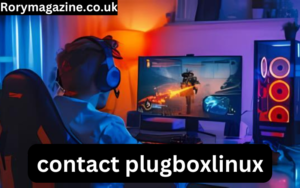Counter-Strike 1.6 (2003) stands as one of the most iconic and celebrated games in the world of first-person shooters (FPS). This version of Counter-Strike, which evolved from a Half-Life mod into a full-fledged game, has been a cornerstone of the gaming community for over two decades. Launched in 2003, this version introduced game icons and banners that were instrumental in shaping the in-game experience, community culture, and competitive scene.
This article will explore the significance of Counter-Strike 1.6 (2003) game icons and banners, the history behind their development, their role in enhancing the game’s atmosphere, and how they have become enduring symbols in the world of esports.
A Brief History of Counter-Strike 1.6
Before delving into the specifics of game icons and banners, it’s essential to understand the background of Counter-Strike 1.6 (CS 1.6). Counter-Strike originally started as a modification (mod) of Valve’s critically acclaimed Half-Life. Developed by Minh Le and Jess Cliffe, the mod became immensely popular, and in 2000, Valve officially acquired the rights to the game, turning it into a standalone release. This led to various iterations, with version 1.6 becoming the definitive edition by 2003.
CS 1.6 introduced many features that have stood the test of time, including new weapons, improved graphics, and more refined gameplay mechanics. But beyond these tangible upgrades, the introduction of game icons and banners contributed to the overall experience by giving players a deeper sense of immersion and engagement.
Understanding Game Icons in Counter-Strike 1.6
Icons play an essential role in providing information to players in a way that is both subtle and effective. In CS 1.6, game icons serve various purposes, from weapon selection to status indicators, all designed to ensure seamless communication in a high-paced gaming environment.
1. Weapon Icons
One of the most crucial sets of icons in Counter-Strike 1.6 relates to the weapons. The game features a wide range of firearms, each with a unique icon visible in the HUD (heads-up display). These icons help players quickly identify their equipped weapons without needing to switch to them physically. From the iconic AK-47 to the M4A1, each weapon’s silhouette is meticulously designed to offer instant recognition.
In a fast-paced game like CS 1.6, knowing what weapon you and your teammates or opponents have is vital for strategy and execution. These icons ensure that this information is readily accessible without disrupting the flow of the game.
2. Kill Feed Icons
In addition to weapon icons, the kill feed, which appears in the upper right-hand corner of the screen, showcases an array of unique icons whenever a player is eliminated. These kill feed icons show the type of kill (headshot, knife kill, etc.) and which weapon was used. Not only does this add a competitive edge to the gameplay, but it also highlights individual player achievements.
These icons have become a cultural element of CS 1.6, symbolizing moments of triumph or defeat. A headshot icon, for instance, is revered by players as a mark of skill and precision.
3. Status Icons
Status icons are another vital part of the game’s iconography. These icons display key information about the player’s health, armor, and remaining ammunition. The simplicity and clarity of these icons allow players to focus on the gameplay without getting distracted by complex visual cues. Designed for quick interpretation, these icons ensure players can make rapid decisions based on their status without losing precious milliseconds.
The Role of Banners in Counter-Strike 1.6
While game icons provide functional benefits, banners in CS 1.6 serve a more atmospheric and community-driven role. Banners are often used to represent teams, sponsors, or event organizers in professional gaming matches or community servers. These banners add an extra layer of identity and personalization to the game.
1. Team Banners in Competitive Play
In the competitive Counter-Strike scene, banners play a significant role in creating a professional and organized feel during tournaments and league matches. Teams typically use banners to represent their organization, sponsors, or individual player achievements. These banners are often displayed in prominent positions within the game map, adding a sense of grandeur and importance to the event.
Many legendary teams in the history of Counter-Strike 1.6, such as SK Gaming, Ninjas in Pyjamas (NiP), and Fnatic, have their banners proudly displayed during matches. For players and fans alike, these banners evoke a sense of pride, representing the team’s legacy and achievements. Even after the end of a match, these banners remain etched in the memories of spectators as a visual representation of the action they witnessed.
2. Community Banners
Outside of professional play, the Counter-Strike community has always been an essential part of the game’s identity. Banners often appear in community servers, representing clans, gaming networks, or specific groups of players. In these community spaces, banners allow players to express their individuality or show solidarity with a particular clan or group.
The customization of banners in community servers also allows server admins to create a more immersive and personalized experience. For instance, a server dedicated to a specific country or city might feature local banners, bringing a sense of locality and belonging to the players.
3. In-Game Events and Special Banners
Occasionally, special events within the CS 1.6 community or the broader esports scene will be commemorated with unique banners. Whether it’s celebrating a tournament victory or marking a milestone for a server, these banners become collector’s items of sorts. In the early days of esports, many events were grassroots operations, and banners helped solidify the feeling that these moments were part of something bigger than just an online match.
![]()
The Aesthetic and Legacy of Counter-Strike 1.6 Icons and Banners
Icons and banners in Counter-Strike 1.6 are not only functional elements but also aesthetic ones. Over the years, the visual style of the game’s icons has become iconic in itself. The minimalist design of weapon icons, for instance, has been praised for its clarity and effectiveness. The straightforward nature of the icons and banners reflects the broader design philosophy of CS 1.6, where simplicity meets function.
1. Modding and Customization
One of the defining features of CS 1.6 is its moddability. Players and server admins often take advantage of the ability to modify game files to create custom icons and banners. This aspect of the game has led to a thriving modding community, with countless fan-made creations that give servers and individual players a unique flair.
Custom banners, in particular, have allowed servers to stand out from the crowd. Server owners can create their banners and inject them into the game environment, often leading to an engaging and personalized experience. Players who frequented particular servers would become familiar with these custom banners, adding to the sense of community.
2. Cultural Impact
The cultural impact of Counter-Strike 1.6 cannot be overstated. The game’s icons and banners have become symbols of the early 2000s gaming culture, representing not just the game itself but also the communities and players who made it a global phenomenon. Many players who grew up playing CS 1.6 can instantly recognize a headshot icon or the banners of legendary teams, bringing back a flood of memories from their gaming past.
As esports grew into the massive industry it is today, the visual language of Counter-Strike 1.6 helped lay the groundwork. The clarity and instant recognizability of icons in competitive play became a standard that many games have since adopted.
FAQs
1. What is Counter-Strike 1.6?
Counter-Strike 1.6 is a version of the first-person shooter game Counter-Strike, which was released in 2003. It was originally developed as a mod for Half-Life and later became a standalone game, known for its tactical gameplay, competitive nature, and iconic status within the gaming community.
2. What role do game icons play in Counter-Strike 1.6?
Game icons in Counter-Strike 1.6 serve several purposes, such as representing equipped weapons, showing player status (health, armor, ammunition), and indicating kills in the kill feed. These icons help players quickly identify key information, enhancing gameplay without disrupting the fast-paced environment.
3. What are weapon icons, and how are they used in CS 1.6?
Weapon icons represent the player’s current weapon and other available weapons. These icons are visible in the HUD and are designed for quick identification. Players can see the icons for both their own weapons and those used by other players in the kill feed.
4. What is the significance of kill feed icons?
Kill feed icons display the type of kill and the weapon used in the upper right-hand corner of the screen. They indicate if a player was killed with a headshot, knife, or grenade, adding an extra layer of competitiveness and celebration of skill.
5. What are banners in Counter-Strike 1.6?
Banners are graphical elements displayed within maps that represent teams, clans, sponsors, or events. These banners are often used in competitive matches or community servers, adding a sense of identity, pride, and professionalism to the game.
6. How are team banners used in competitive CS 1.6 matches?
In professional tournaments and competitive matches, banners represent teams and their sponsors. They are typically displayed prominently within the game maps, adding to the atmosphere of the event and giving fans a visual representation of their favorite teams.
7. Can players customize icons and banners in Counter-Strike 1.6?
Yes, one of the defining features of Counter-Strike 1.6 is its moddability. Players and server admins can create and modify custom icons and banners to personalize their gaming experience. Many community servers feature unique banners that reflect the identity of clans or server themes.
8. What cultural impact did CS 1.6 icons and banners have on the gaming community?
Icons and banners in CS 1.6 have become enduring symbols of early 2000s gaming culture. They represent not just the game itself but also the broader competitive scene, including the rise of esports. The clear and iconic designs have influenced the development of similar features in many subsequent games.
9. Are there special event banners in Counter-Strike 1.6?
Yes, special event banners are often created to commemorate tournaments, milestones, or significant events within the game’s community. These banners may appear in maps during specific events and can become collector’s items or memorable visual elements for players.
10. Why are icons and banners so important in competitive play?
In competitive play, icons provide critical, real-time information about weapons, kills, and player status, ensuring smooth and informed decision-making during matches. Banners help to create a sense of professionalism and identity, whether representing teams or sponsors, contributing to the overall atmosphere of competition.
For More Information Visit: Rory Magazine
Conclusion
Counter-Strike 1.6 (2003) remains one of the most influential games in the history of first-person shooters, and its icons and banners are a significant part of its legacy. These visual elements, from weapon icons to kill feed notifications and team banners, have shaped not only the gameplay experience but also the broader culture of competitive gaming.
The simplicity, clarity, and emotional resonance of CS 1.6’s game icons and banners are a testament to the game’s enduring popularity. As gamers look back on the history of Counter-Strike and the rise of esports, these icons and banners stand as a reminder of the pivotal role that design and aesthetics play in creating a lasting legacy in the world of video games.







